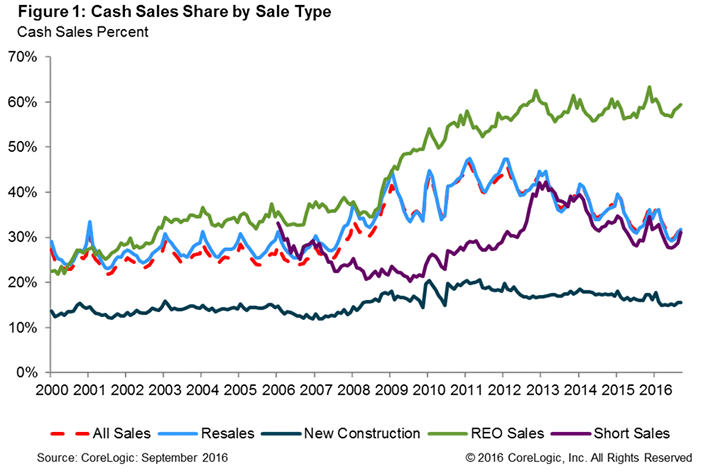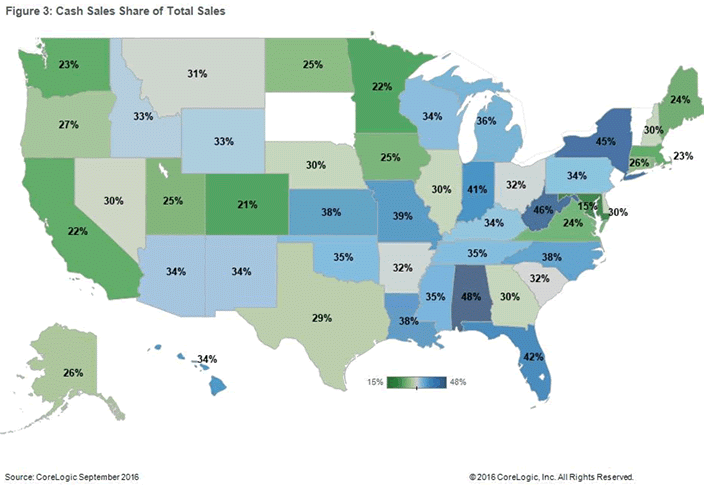The share of cash sales appears to be holding fairly steady, even as investors pull back from the residential market (NAR put the investor share of sales at 12 percent in November) and sales of owned real estate (REO) and short sales decrease to low single-digit levels.
CoreLogic reports that the share of home sale transactions that were all cash in September was 31.7 percent. This is only a 1.3 percentage point decrease from September 2015 and, at that rate of decline, CoreLogic now estimates the cash share will return to the pre-crash average rate of 25 percent by mid-2019. Cash sales peaked in January 2011 at 46.6 percent.
Only 4.7 percent of home sales were from REO inventories in September, but 59.4 percent of those sales were all cash. Sales of existing homes (resales) had a 31.7 percent cash share while short sales, representing 2.7 percent of sales, had a cash share of 31.2 percent. The cash sales share for newly constructed homes was 15.5 percent.

The 7.3 percent of all sales that were accounted for by REO and short sales was 2.8 percentage points below the share in September 2015, and were the lowest share for any month since September 2007. At its peak in January 2009, distressed sales totaled 32.4 percent of all sales with REO sales representing 27.9 percent. The pre-crisis share of distressed sales was traditionally about 2 percent. If the current year-over-year decrease in the distressed sales share continues, it will reach that "normal" 2-percent mark in mid-2018.
All but nine states recorded lower distressed sales shares in September 2016 compared with a year earlier. Maryland had the largest share of distressed sales of any state at 18.9 percent in September 2016, followed by Connecticut (18.4 percent), Michigan (17.6 percent), New Jersey (15.9 percent) and Illinois (15.1 percent).
Figure 3 shows the cash sales share by state for September 2016. Alabama had the largest cash sales share of any state at 47.6 percent, followed by West Virginia (45.8 percent), New York (45.3 percent), Florida (41.6 percent) and Indiana (40.9 percent).








